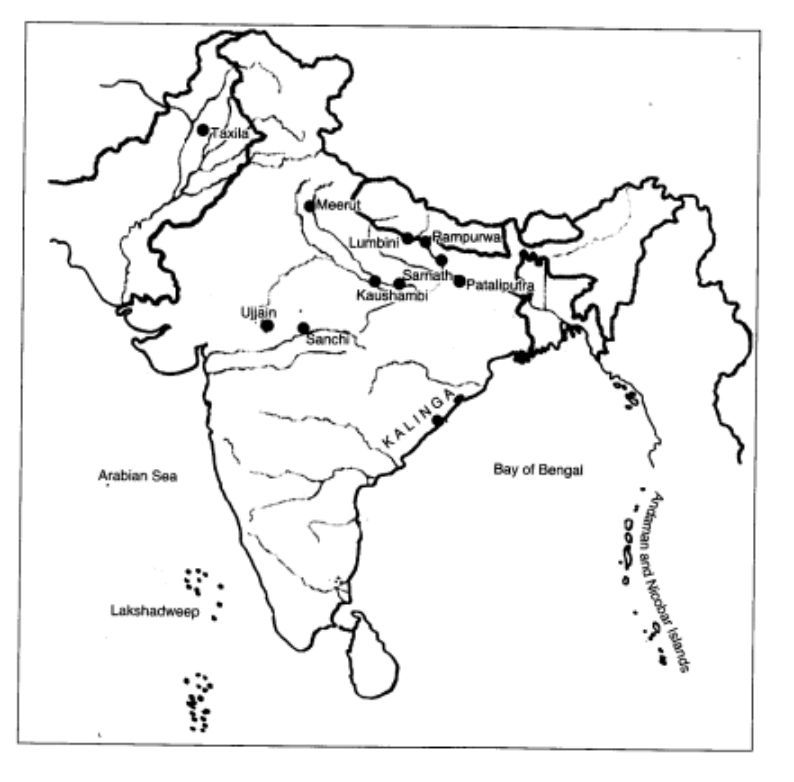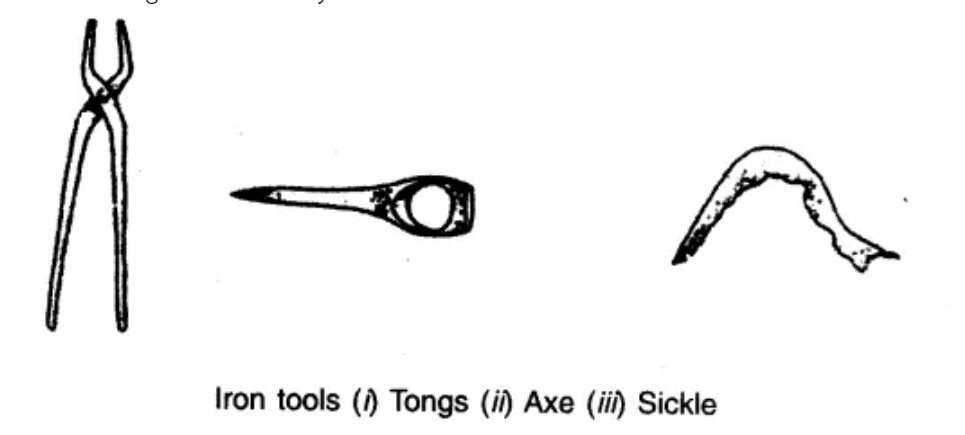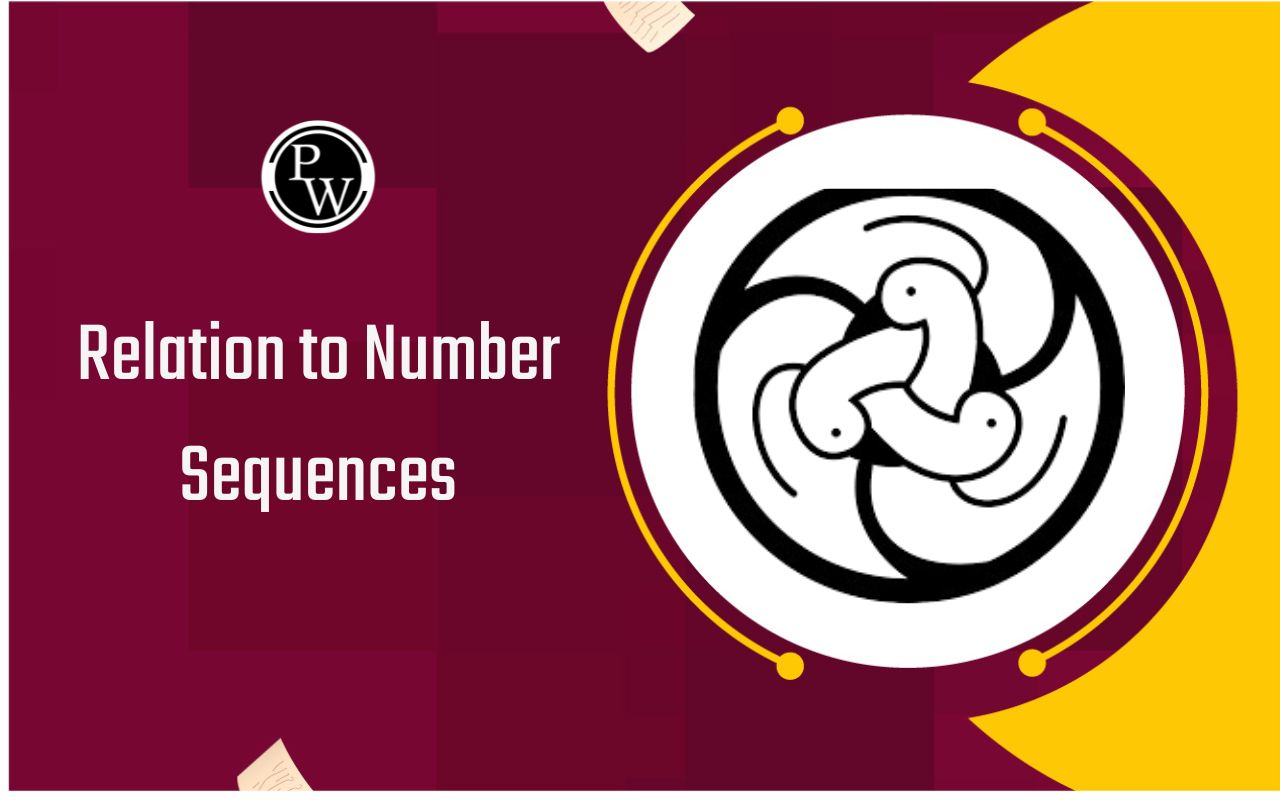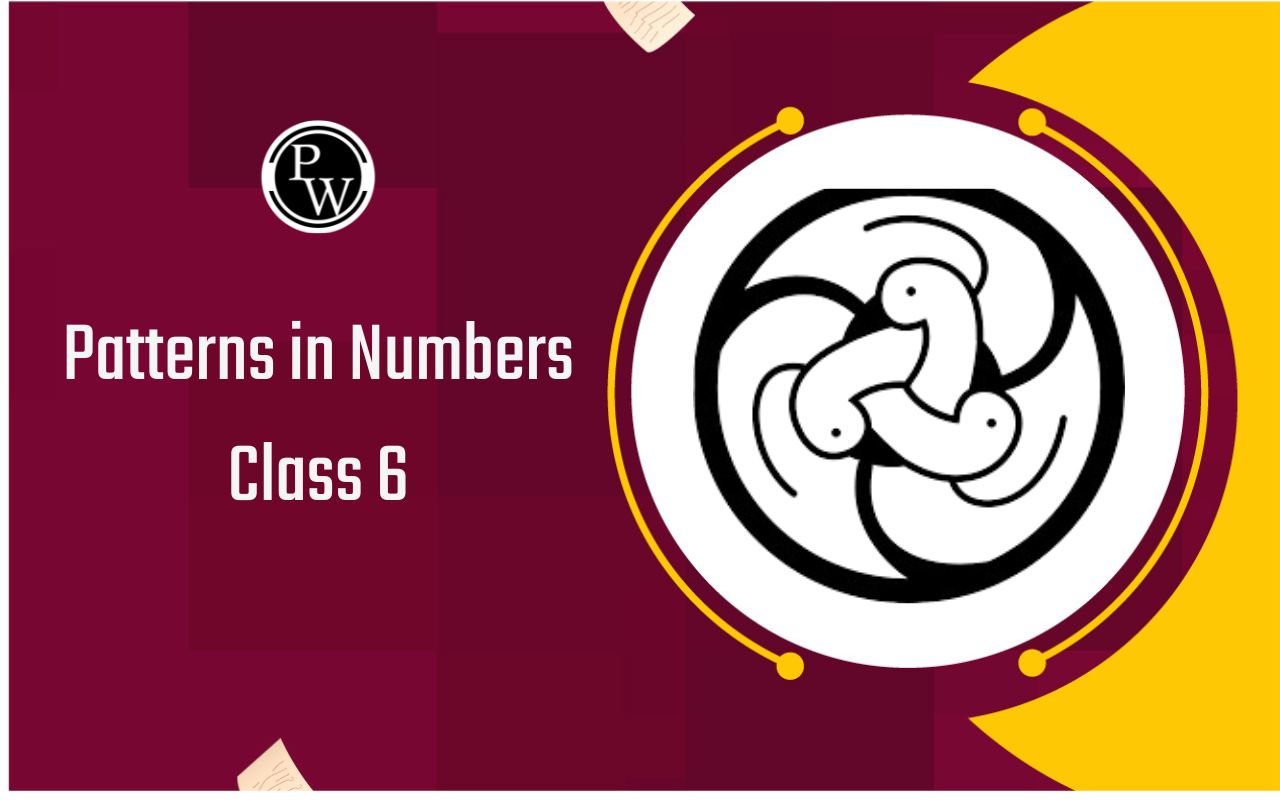
NCERT Solutions for Class 6 Social Science History Chapter 8: Iron played a crucial role in the development of villages, cities, and civilizations. Additionally, villages held significance within large kingdoms, with kings collecting revenue from the residents. To learn more about the importance of villages and towns, refer to Chapter 8 of CBSE Class 6 History, titled "Vital Villages, Thriving Towns.
You can also find solutions to the exercises at the end of the chapter in the book "History – Our Pasts – I" with our NCERT Solutions for Class 6 Social Science History Chapter 8. These solutions, derived from NCERT textbooks, can be valuable for school exams.NCERT Solutions for Class 6 Social Science History Chapter 8 PDF Download
NCERT Solutions for Class 6 Social Science History Chapter 8
NCERT Solutions for Class 6 Social Science History Chapter 8 are very helpful for CBSE class 6 students preparing for their final exams. So, here are the solutions with detailed answers and explanations: 1. Make a list of the occupations of the people who lived within the Mauryan empire. Ans: A list of the occupations of the people who lived within the Mauryan empire:- Trade or Commerce
- Jobs with emperor
- Crafts
- Agriculture
- Animal rearing
- Forest produce-gathering
- Hunting animals for food
- Fishing.
1. Officials collected…….. from the area under the direct control of the ruler.
2. Royal princes often went to the provinces as………….
3. The Mauryan rulers tried to control…….. and……….. which were important for transport.
4. People in forested regions provided the Mauryan officials with…………
Ans:1. taxes
2. governors
3. roads, rivers
4. elephants, timber, honey, and wax.
NCERT Solutions for Class 6 Social Science History
3. State whether true or false: 1. Ujjain was the gateway to the north-west. 2. Chandragupta’s ideas were written down in the Arthashastra. 3. Kalinga was the ancient name of Bengal 4. Most Ashokan inscriptions are in the Brahmi script. Ans: 1. False 2. True 3. False 4. True.NCERT Solutions for Class 6 Social Science History Chapter 2
4. What were the problems that Ashoka wanted to solve by introducing ‘dhamma’? Ans: The problems Ashoka wanted to solve by introducing dhamma were:- Promoting unity among different communities was his aim for the state.
- He advocated for the safeguarding of animals or practising non-violence (Ahimsa).
- He preferred mercy and kindness towards slaves and servants over cruelty.
- Encouraging peace within families and among neighbours was important to him.
- He believed in showing respect to elders.
- He emphasised treating all creatures with compassion.
- Supporting brahmins and monks through giving gifts was part of his philosophy.
- He urged respect for other religions as well.
- Understanding the key concepts of other religions was encouraged by him.
- Slaves and servants would have got proper wages and better treatment.
- Their duty hours and working conditions would have improved.
NCERT Solutions for Class 6 Social Science History Chapter 5
7. Write a short paragraph explaining to Roshan why the lions are shown on our currency notes. List at least one other object on which you see them. Ans: The lions are featured in the Lion Capital in Samath. They appear on our money to honour Ashoka, one of India's greatest kings, who constructed the capital. Additionally, after gaining independence, the lion was chosen as the national animal, so the currency notes also display the Lion Capital. The coins of our currency also depict these lions. 8. Suppose you had the power to inscribe your orders, what four commands would you like to issue? Ans: I would like to issue the following four orders:- People ought to show consideration for older individuals, and elders should display affection towards the younger ones.
- People should demonstrate respect for the beliefs of others. It is important to make an effort to comprehend the core principles of someone else's faith and honour it.
- Show kindness to your domestic helpers and workers.
- Demonstrate loyalty to your homeland.
NCERT Solutions for Class 6 Social Science History Chapter 1
1. MULTIPLE CHOICE QUESTIONS Choose the correct option to complete the statements given below:(i) The founder of the Maurya empire was ………….,
(a) Ashoka
(b) Chandragupta
(c) Bimbisara
(d) Chanakya.
(ii)The capital of the Mauryan empire was………….
(a) Pataliputra
(b) Rajagriha
(c) Ujjain
(d) Taxila.
(iii) According to the Arthashastra, blankets of………… India was famous.
(a) north
(b) north-west
(c) south
(d) north-east.
(iv) The script used for inscription was ……………
(a) Brahmi
(b) Prakrit
(c) Tamil
(d) Roman.
(v) Ashoka was a ………………
(a) Hindu
(b) Jaina
(c) Buddhist
(d) None of these.
Ans.(i)—(b), (ii)—(a), (iii)—(b), (iv)—(a), (v)—(c).
 1. FILL IN THE BLANKS
Fill in the blanks with appropriate words to complete each sentence.
1. FILL IN THE BLANKS
Fill in the blanks with appropriate words to complete each sentence.
1. Ashoka was Chandragupta’s ……………………………….
2. Chanakya was …….. ’s minister.
3. The Arthashastra was written by………….
4. …….. was the gateway to the northwest of the empire.
5. ……… were sent as governors to other provincial capitals.
6. South India was important for ………….
7. Ashoka gave up the war after winning over…………
8. ‘Dhamma’ is the Prakrit word for the Sanskrit word
9. Ashoka appointed …….. to spread ‘dhamma’.
Answer:
1. grandson 2. Chandragupta 3. Chanakya 4. Taxila 5. Royal princes 6. gold and other precious stones 7. Kalinga 8. ‘Dharma’ 9. officials.NCERT Solutions for Class 6 Social Science History Chapter 3
III. TRUE/FALSE State whether these sentences are true (T) or false (F).1. The lions on the currency notes come from the Rampurwa bull capital,
2. Ashoka founded the Mauryan empire.
3. Royal princes were sent as governors to provinces.
4. Ashoka gave up the war after losing in Kalinga.
5. Ashoka himself went from place to place to preach ‘dhamma’.
6. The ‘dhamma’ also reached other countries.
Ans. 1. F 2. F 3. T 4. F 5. F 6. TNCERT Solutions for Class 6 Social Science History Chapter 4
MATCHING SKILL Match the items in column A correctly with those given in column B. (v) VERY SHORT ANSWER TYPE QUESTIONS 1. Who was Chanakya? Ans: Chanakya (or Kautilya) was a wise man who served Chandragupta Maurya. 2. Who lived in the Mauryan cities? Ans: Merchants, officials, and craftspersons lived in Mauryan cities. 3. Giue one point of difference between empires and kingdoms. Ans: Empires need more resources than kingdoms do as they are larger, 4. Give one point of information given by the Arthashastra Ans: The Arthashastra tells that the northwest of the Mauryan empire was important for blankets, and south for stones, 5. What all was given as tribute by people in forested areas? Ans: People living in the forested areas gave elephants, timber, honey, wax, etc. as a tribute.NCERT Solutions for Class 6 Social Science History Chapter 6
6. What was special about Ashoka as a ruler? [V. Imp.] Ans: Ashoka was the first ruler who tried to take his message to his subject through inscriptions. 7. What change came upon Ashoka after the Kalinga war?[V. Imp.] Ans: Ashoka saw that there was a lot of violence in the war and many people were killed. So he decided he would not fight any more wars, 8. What was the purpose of Ashoka’s ‘dhamma’? [V. Imp.] Ans: Ashoka wished to instruct his subjects, for which he introduced his ‘dhamma’. 9. Name some countries where Ashoka spread his ‘dhamma’. Ans: Ashoka’s ‘dhamma’ reached Syria, Egypt, Greece and Sri Lanka among other sounds. , 10. Where has the Rampurwa Bull been placed now? Ans: The Rampurwa Bull is now In the Rashtrapati Bhavan.NCERT Solutions for Class 6 Social Science History Chapter 7
IV SHORT ANSWER TYPE QUESTIONS 1. Write a short note to describe the Mauryan people. Ans: The Mauryan towns mostly had traders, government workers, and skilled workers. In the rural areas, there were farmers and herders. In the wooded regions, individuals collected things from the forest and hunted for food. The people in various regions of the empire spoke different languages. They most likely ate different types of food, and the same can be said about the clothes they dressed in. 2. How was Ashoka unique? [V. Imp.] Ans: Ashoka stood out as the well-known leader of the Mauryan dynasty. He communicated his ideas to the public using writings in the language of the people, called Prakrit. What's unique about Ashoka is that, unlike any other king in history, he decided to stop fighting wars even after winning one. This change of heart happened when he witnessed the brutality of the Kalinga war. After this, Ashoka embraced Buddhism and was inspired by the concept of 'dhamma.'NCERT Solutions for Class 6 Social Science History Chapter 10
VII. LONG ANSWER TYPE QUESTIONS 1. Describe governance in the Mauryan empire. [V. Imp.] Ans: The Mauryan empire consisted of several different parts which were ruled over differently.- The Empire’s capital. The places near Pataliputra, the empire's capital, were directly managed by the emperor. Officials were to gather taxes from the people following the ruler's orders carefully.
- The Provincial capitals. There were regions with their capitals, like Taxila and Ujjain in the northwest and central India. The emperor in Pataliputra had some influence, and royal princes were appointed as governors.
- Other areas. In different regions, the Mauryans managed roads and rivers, crucial for transportation. They gathered resources, whatever was accessible, as a form of tribute.

NCERT Solutions for Class 6 Social Science History Chapter 9
NCERT Solutions for Class 6 History Chapter 8 Vital Villages, Thriving Towns
Q.1 Fill in the blanks. 1. _______ was a word used for large landowners in Tamil. 2. The gramabhojaka often got his land cultivated by the_____. 3. Ploughmen were known as_____ in Tamil. 4. Most grihapatis were _____ landowners. Solution: (a) Vellalar (b) Slaves and workers (c) Uzhavar (d) Smaller Q.2 Describe the functions of the grambhojka. Why do you think he was powerful? Solution: Gramabhojaka was the leader of the village and sometimes also owned the most land. They were influential individuals in the village who gathered taxes from the villagers on behalf of the king, served as a judge, and upheld the king's laws in the village. Q.3 List the crafts persons who would have been present in both villages and cities. Solution: Workers like blacksmiths, weavers, carpenters, and potters could be found in both towns and cities. They had an important job in offering products and services that made sure places ran well. Q.4 Choose the correct answer. (a) Ring wells were used for: 1. Bathing 2. Washing clothes 3. Irrigation 4. drainage (b) Punch-marked coins were made of: 1. Silver 2. Gold 3. Tin 4. Ivory (c) Mathura was important: 1. Rulers 2. Craftspersons 3. Religious centre 4. Forested area (d) Shrenis were associations of: 1. Rulers 2. Craftspersons 3. Farmers 4. Herders Solution:1. Drainage
Archaeologists discovered lines of pots or ceramic rings stacked one above the other, called ring wells. In certain situations, people used them as toilets, and they were also used as drains and places to throw away garbage.2. Silver
‘The punch-marked coins’ get their name from the designs on the coins that were punched on them. They are coins made out of materials like copper and silver.3. Religious centre
Mathura has been a significant settlement for over 2500 years, featuring numerous sacred places within the walled city. There were places of worship for Buddhists and Jains, and it served as a vital hub for the worship of Lord Krishna.NCERT Solutions for Class 6 Social Science History Chapter 11
4. Craftspersons
Shrenis were groups of artisans and traders. These craft shrenis offered instruction, obtained materials, and distributed the final goods. Q.5 Which of the iron tools shown on page 79 (of the NCERT textbook) would have been important for agriculture? What would the other tools have been used for? Solution: The tools made of iron on page 79 include tongs, axes, and sickles, as seen in the picture below. The sickle was likely used for farming, the axe was important for cutting trees and collecting firewood, and tongs were used by a blacksmith to create tools from hot iron. Q.6 Compare the drainage system in your locality with that of the cities mentioned in the lesson. What similarities and differences do you notice?
Solution:
The drainage system in our area is a more advanced form compared to what ancient civilizations used. Back then, they made drains using mud bricks, ceramics, and thatch, but those materials weren't long-lasting and would break down over time. Nowadays, our modern drainage systems are built with sturdy materials like concrete and metal. Interestingly, like in the old days, the drains are still constructed using stacked rings to form a tube-like structure. These similarities are still evident today.
Q.7
If you have seen craftspersons at work, describe in a short paragraph what they do. (Hint: How do they get the raw materials, what kind of equipment do they use, how do they work and what happens to the finished product.)
Solution:
I've observed skilled workers such as shoemakers and woodworkers in both urban and rural areas. Shoemakers are quite common, and you can spot them at nearly every street corner in the city. They fix shoes by sewing torn leather or sticking loose soles back in place. In villages, they create handmade shoes and slippers from leather to sell locally or in city markets for a decent amount.
Q.8 List the functions of men and women living in your city or village. In what ways are these similar to those performed by people who lived in Mathura? In what ways are they different?
Solution:
This project should be done under the supervision of your subject teacher.
Q.6 Compare the drainage system in your locality with that of the cities mentioned in the lesson. What similarities and differences do you notice?
Solution:
The drainage system in our area is a more advanced form compared to what ancient civilizations used. Back then, they made drains using mud bricks, ceramics, and thatch, but those materials weren't long-lasting and would break down over time. Nowadays, our modern drainage systems are built with sturdy materials like concrete and metal. Interestingly, like in the old days, the drains are still constructed using stacked rings to form a tube-like structure. These similarities are still evident today.
Q.7
If you have seen craftspersons at work, describe in a short paragraph what they do. (Hint: How do they get the raw materials, what kind of equipment do they use, how do they work and what happens to the finished product.)
Solution:
I've observed skilled workers such as shoemakers and woodworkers in both urban and rural areas. Shoemakers are quite common, and you can spot them at nearly every street corner in the city. They fix shoes by sewing torn leather or sticking loose soles back in place. In villages, they create handmade shoes and slippers from leather to sell locally or in city markets for a decent amount.
Q.8 List the functions of men and women living in your city or village. In what ways are these similar to those performed by people who lived in Mathura? In what ways are they different?
Solution:
This project should be done under the supervision of your subject teacher.
NCERT Class 6 Social Science History Chapter 8 Vital Villages, Thriving Towns Summary
The NCERT Class 6 Our Pasts – I Chapter 8 talks about the following topics:- Iron tools and agriculture
- Other steps to increase production: Irrigation
- Who lived in the villages?
- Coins
- Cities with many functions
- Crafts and craft persons
- A closer look – Arikamedu
Benefits of NCERT Solutions for Class 6 Social Science History Chapter 8
NCERT is an autonomous organisation that develops educational materials for schools in India. NCERT solutions for various classes and subjects, including Class 6 Social Science History, offer several advantages: 1. Aligned with Curriculum: NCERT solutions are designed in accordance with the curriculum prescribed by the Central Board of Secondary Education (CBSE). This alignment ensures that students cover the essential topics and concepts required for their examinations. 2. Clear and Concise Content: The solutions provided by NCERT are written in a clear and concise manner. This makes it easier for students to understand complex concepts, aiding in better comprehension and retention of information. 3. Systematic Approach: NCERT solutions are organised in a systematic manner, following a logical sequence of topics. This helps students build a strong foundation and understand the chronological order of historical events, which is particularly important in the study of history. 4. Conceptual Clarity: The solutions focus on building conceptual clarity among students. They explain the fundamental principles and ideas behind historical events, helping students develop a deeper understanding of the subject rather than rote memorization. 5. Practice Questions and Exercises: NCERT solutions include a variety of practice questions and exercises. These questions are essential for self-assessment and reinforcement of learning. Regular practice with these questions can enhance problem-solving skills and prepare students for examinations. 6. Quality Content: NCERT is known for producing high-quality educational content. The solutions are well-researched, reviewed, and updated to provide accurate and reliable information to students. 7. Preparation for Competitive Exams: NCERT textbooks and solutions are considered fundamental resources for various competitive exams in India. Using NCERT solutions can help students prepare for these exams effectively by ensuring they have a strong foundation in the basics. 8. Teacher and Parent Reference: NCERT solutions serve as valuable resources for teachers and parents. They can use these materials to assist students with their studies, provide additional explanations, and monitor academic progress.NCERT Solutions for Class 6 Social Science History Chapter 8 FAQs
What challenges do students commonly face in studying Class 6 Social Science History?
Are there additional resources recommended for a deeper understanding of Chapter 8?
How do historical concepts in Chapter 8 relate to the present day?
Can I find interactive tools related to Chapter 8 for a more engaging learning experience?
What note-taking strategies are effective for studying history?








